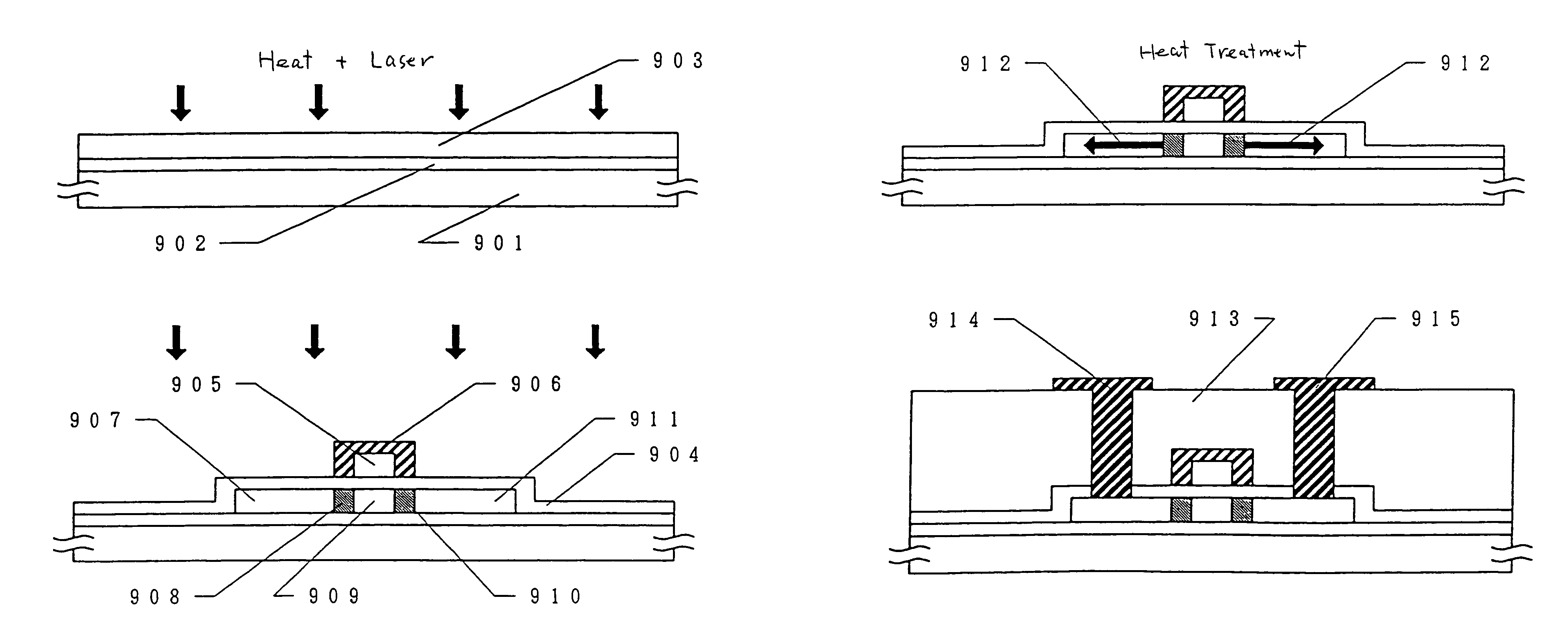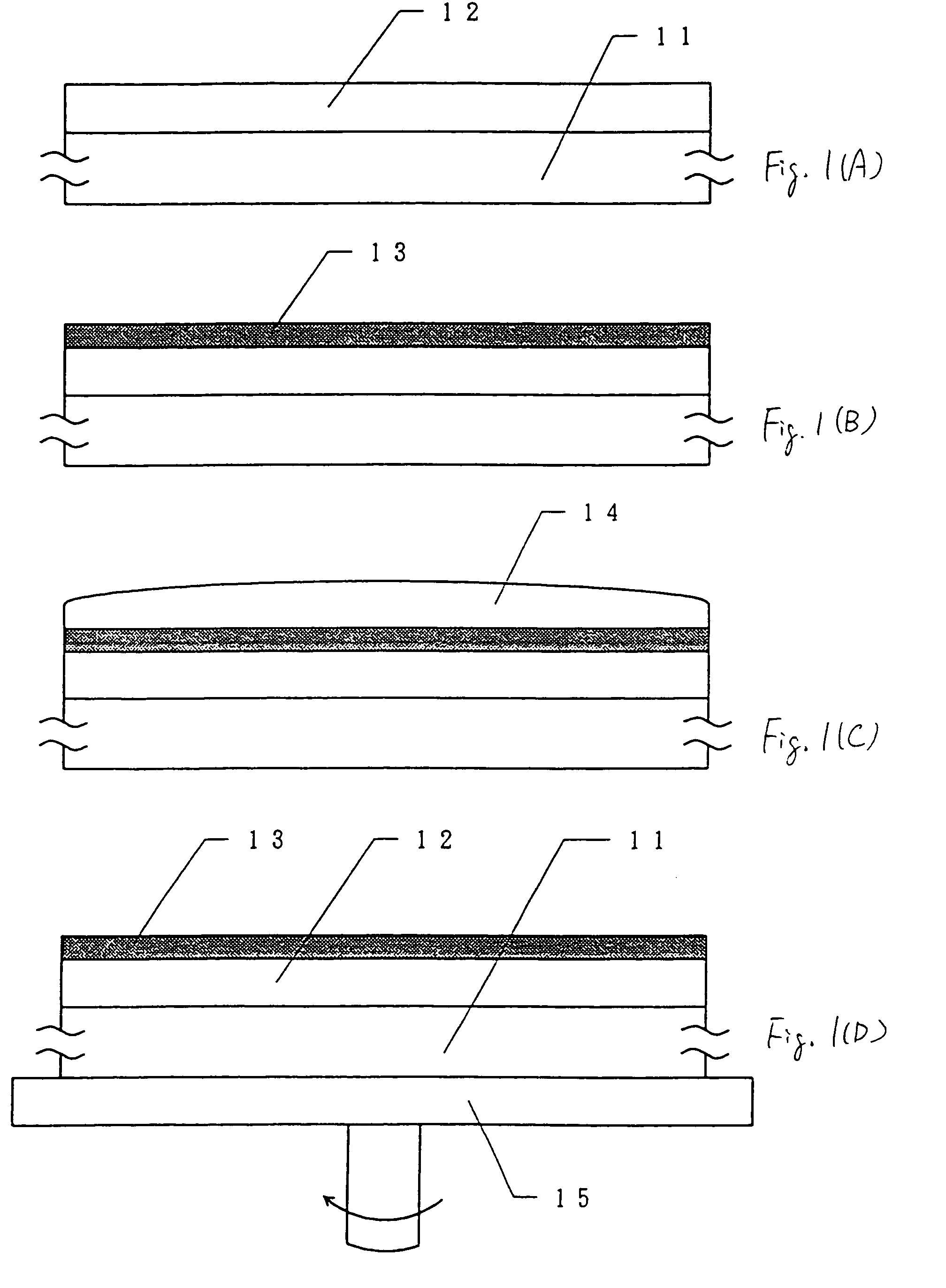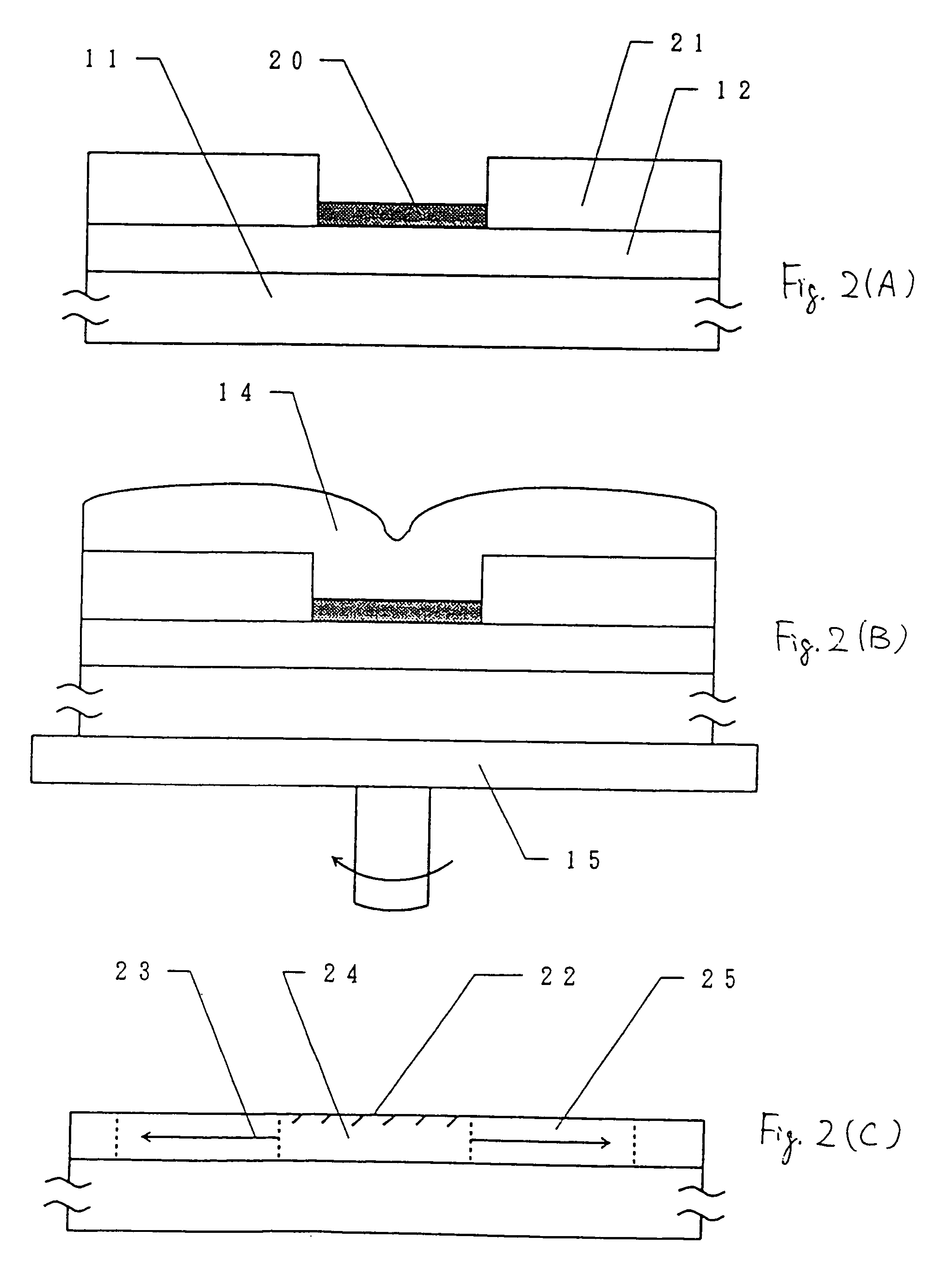Method of fabricating a semiconductor device utilizing a catalyst material solution
- Summary
- Abstract
- Description
- Claims
- Application Information
AI Technical Summary
Benefits of technology
Problems solved by technology
Method used
Image
Examples
embodiment 1
[0079]In this embodiment, to impart crystallinity to an amorphous silicon film, an aqueous solution containing a catalyst element for accelerating crystallization is applied to the amorphous silicon film, and then laser light irradiation is performed.
[0080]Referring to FIGS. 1(A) to 1(D), steps to the introduction of a catalyst element (nickel in this embodiment) will be described. In this embodiment, a plate of Corning 7059 glass having a size of 100 mm×100 mm is used as a substrate 11.
[0081]First, an amorphous silicon film of 100 to 1,500 Å in thickness is deposited by plasma CVD or LPCVD. In this embodiment, a 1,000-Å-thick amorphous silicon film 12 is deposited by plasma CVD. (FIG. 1(A))
[0082]Then, a hydrofluoric acid treatment is performed to remove stain and a natural oxide film, and an oxide film 13 of 10 to 50 Å in thickness is formed. Where stain is negligible, the natural oxide film itself may be used instead of the oxide film 13. (FIG. 1(B))
[0083]Since the oxide film 13 i...
embodiment 2
[0093]A manufacturing method of this embodiment is different from Embodiment 1 in that a 1,200-Å-thick silicon oxide film is selectively formed and nickel is selectively introduced by using the silicon oxide film as a mask. Crystal growth is effected parallel with the substrate.
[0094]FIGS. 2(A) to 2(C) schematically shows a manufacturing process according to this embodiment. First, a silicon oxide film 21 having a thickness of more than 1,000 Å, of 1,200 Å in this embodiment, that is to become a mask is formed over a glass substrate 11 (Corning 7059, 10 cm×10 cm). Experiments by the inventors have proved that there occurs no problem even if the silicon oxide film 21 is thinner than 500 Å. It appears that the silicon oxide film 21 can further be thinned if it is dense.
[0095]The silicon oxide film 21 is then shaped into a desired pattern by ordinary photolithography patterning. And a thin silicon oxide film 20 is formed by 5-minute irradiation with ultraviolet light in an oxygen atmos...
embodiment 3
[0106]This embodiment is directed to the case of forming a TFT by using a crystalline silicon film that is formed by the method of the invention. The TFT of this embodiment can be used in a driver circuit and a pixel area of an active matrix type liquid crystal display device. It goes without saying that the TFT can be applied to not only liquid crystal display devices but also generally called thin-film integrated circuits.
[0107]FIGS. 3(A) to 3(E) schematically show a manufacturing process according to this embodiment. First, a 2,000-Å-thick undercoat silicon oxide film (not shown) is deposited on a glass substrate 11 to prevent impurity diffusion from the glass substrate 11.
[0108]A 500-Å-thick amorphous silicon film is then formed in the same manner as in Embodiment 1. After a hydrofluoric acid treatment for removing a natural oxide film, a thin oxide film of about 20 Å in thickness is formed by irradiation with ultraviolet light in an oxygen atmosphere. Alternatively, the thin ox...
PUM
| Property | Measurement | Unit |
|---|---|---|
| Crystallinity | aaaaa | aaaaa |
| Semiconductor properties | aaaaa | aaaaa |
Abstract
Description
Claims
Application Information
 Login to View More
Login to View More - R&D
- Intellectual Property
- Life Sciences
- Materials
- Tech Scout
- Unparalleled Data Quality
- Higher Quality Content
- 60% Fewer Hallucinations
Browse by: Latest US Patents, China's latest patents, Technical Efficacy Thesaurus, Application Domain, Technology Topic, Popular Technical Reports.
© 2025 PatSnap. All rights reserved.Legal|Privacy policy|Modern Slavery Act Transparency Statement|Sitemap|About US| Contact US: help@patsnap.com



